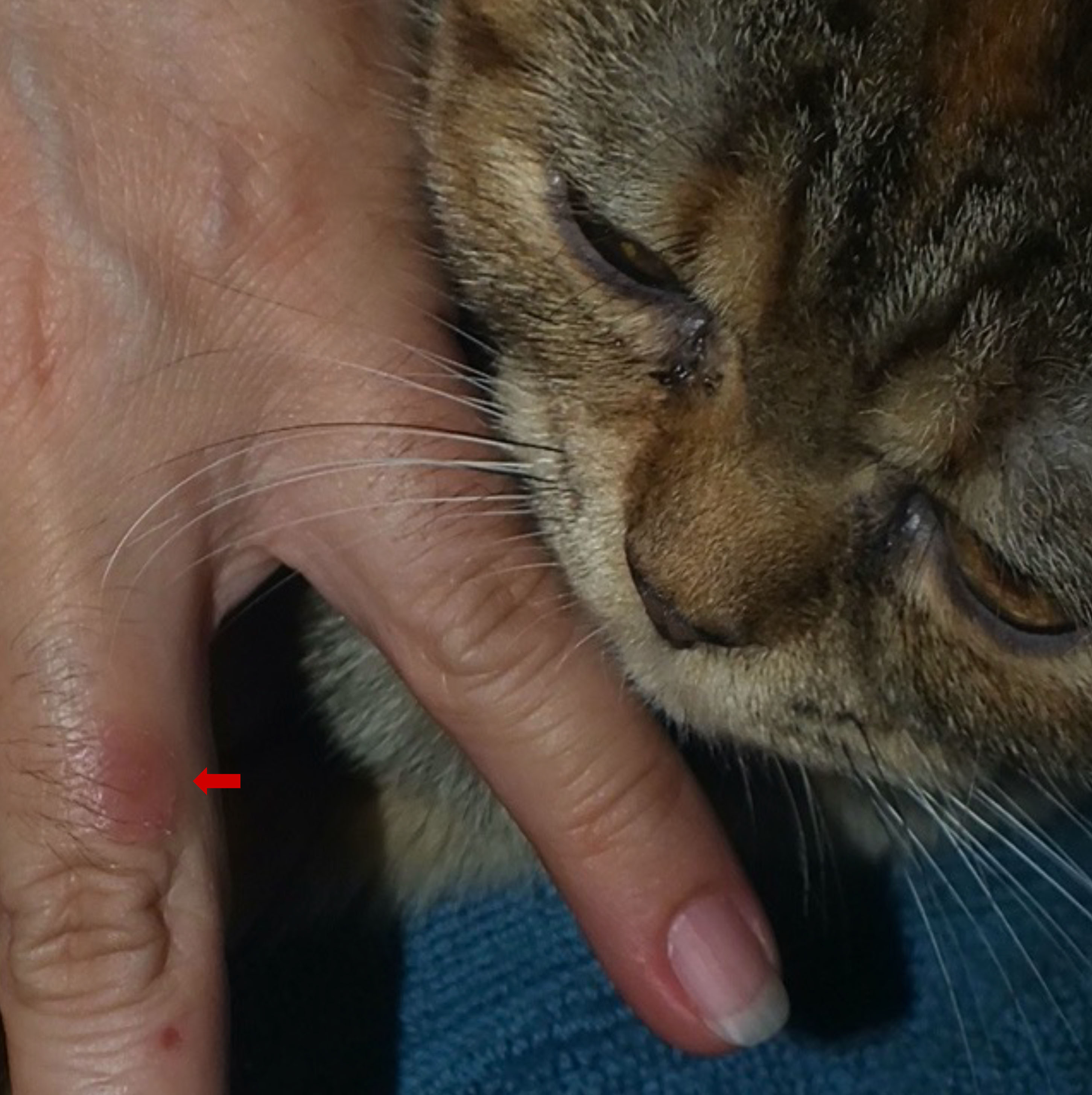Practical use of handheld ultraviolet flashlights for detection of fungal reservoirs in a patient with Microsporum canis dermatophytosis with similar efficacies to Wood’s lamp
Keywords:
Handheld ultraviolet flashlights, Wood’s lamp, Zoophilic dermatophytosis, Fluorescent, Microsporum canisAbstract
Reinfection is the common problem in patients with dermatophytosis. Disinfection of pets is important prevention for reinfection in patients with zoophilic dermatophytosis. A Wood’s lamp can be used to detect infected pets which have superficial fungal infections, especially Microsporum canis. However, the device is expensive, bulky and not readily available at every clinic. We reported a 49-year-old woman with M. canis dermatophytosis on the left arm and abdomen. Her asymptomatic cat showed no abnormal lesions; however, a standard Wood’s lamp and two handheld ultraviolet (UV) flashlights on the hair revealed areas of fluorescence. The affected hair under a handheld UV flashlight was collected for potassium hydroxide examination and fungal culture which yielded positive results. In summary, the handheld UV flashlights can detect M. canis infection in pets with similar efficacy to that of the original Wood’s lamp.
References
Mancianti F, Nardoni S, Corazza M, D'Achille P , Ponticelli C. Environmental detection of Microsporum canis arthrospores in the households of infected cats and dogs. J Feline Med Surg 2003;5:323-8.
Chermette R, Ferreiro L, Guillot J. Dermatophytoses in animals. Mycopathologia 2008;166:385-405.
Bunyaratavej S, Limphoka P, Kiratiwongwan R, Leeyaphan C. Comparison of patient and clinical differences between superficial skin infections due to Microsporum canis and Trichophyton rubrum. Southeast Asian J Trop Med Public Health 2020;51:124-8.
Asawanonda P, Taylor CR. Wood's light in dermatology. Int J Dermatol 1999;38:801-7.
Sharma S, Sharma A. Robert Williams Wood: pioneer of invisible light. Photodermatol Photoimmunol Photomed 2016;32:60-5.
Kaliyadan F, Kuruvilla J. Using a hand-held black-light source instead of a Wood's lamp. J Am Acad Dermatol 2015;72:e153-4.
Havlickova B, Czaika VA, Friedrich M. Epidemiological trends in skin mycoses worldwide. Mycoses 2008;51:2-15.
Weitzman I, Summerbell RC. The dermatophytes. Clin Microbiol Rev 1995;8:240-59.
Bunyaratavej S, Sombatmaithai S, Muanprasat C, Chularojanamontri L, Kulthanan K. Zoophilic dermatophytosis: a study of closed contact cases. Thai J Dermatol 2008;24:194-207.
Kobwanthanakun W, Bunyaratavej S, Leeyaphan C. Tinea corporis from Microsporum canis: A case report in 2 patients from 1 asymptomatic feline. Thai J Dermatol 2018;34:299-304.

Downloads
Published
How to Cite
Issue
Section
License
Copyright (c) 2022 Thai Journal of Dermatology

This work is licensed under a Creative Commons Attribution-NonCommercial-NoDerivatives 4.0 International License.
เนื้อหาและข้อมูลในบทความที่ลงตีพิมพ์ในวารสารโรคผิวหนัง ถือเป็นข้อคิดเห็นและความรับผิดชอบของผู้เขียนบทความโดยตรงซึ่งกองบรรณาธิการวารสาร ไม่จำเป็นต้องเห็นด้วย หรือร่วมรับผิดชอบใดๆ
บทความ ข้อมูล เนื้อหา รูปภาพ ฯลฯ ที่ได้รับการตีพิมพ์ในวารสารโรคผิวหนัง ถือเป็นลิขสิทธิ์ของวารสารฯ หากบุคคลหรือหน่วยงานใดต้องการนำทั้งหมดหรือส่วนหนึ่งส่วนใดไปเผยแพร่ต่อหรือเพื่อกระทำการใดๆ จะต้องได้รับอนุญาตเป็นลายลักอักษรจากบรรณาธิการวารสารโรคผิวหนังก่อนเท่านั้น


